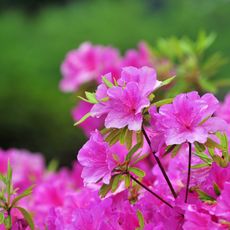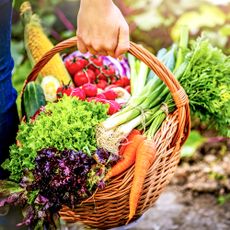Spinach Anthracnose Treatment – How To Manage Spinach Anthracnose

Anthracnose of spinach is a disease that’s brought about by a fungal infection. It can cause severe damage to spinach leaves and will overwinter in the garden indefinitely if it’s not taken care of. Keep reading to learn more about symptoms of anthracnose on spinach plants and how to manage spinach anthracnose.
Spinach Anthracnose Info
Anthracnose is a disease that affects a wide range of vegetable crops and is the result of the presence of a number of fungi in the genus Colletotrichum. Anthracnose of spinach plants is mostly caused by the fungus Colletotrichum spinaciae, although it has also been traced to Colletotrichum dematium. Symptoms of anthracnose on spinach plants start as small, watery, dark green to black spots on the leaves. These spots grow in size and turn light brown and papery. Several spots may coalesce into one, killing the leaf. Small darkly colored spores appear in the middle of the spots, marking the disease as unmistakable for anthracnose.
How to Manage Spinach Anthracnose
Anthracnose of spinach spreads through spores which can be harbored in seeds and old plant material. The best way to avoid the spread of these spores is to plant certified disease-free seed and to eliminate old plant tissue at the end of the season, either by removing and destroying it or tilling it deep underground. The spores spread best in warm, moist conditions, and the disease is most common in climates that receive frequent spring rains. It can often be controlled by providing good air circulation and watering only at the base of the plants. Fungicides can usually provide control, especially those containing copper. The best spinach anthracnose treatment is dry weather, which will often cause the infected foliage to drop and be replaced by healthy leaves. If an outbreak of anthracnose occurs during a damp spring, it is not uncommon for it to go away on its own with the drier summer weather.
Gardening tips, videos, info and more delivered right to your inbox!
Sign up for the Gardening Know How newsletter today and receive a free copy of our e-book "How to Grow Delicious Tomatoes".

The only child of a horticulturist and an English teacher, Liz Baessler was destined to become a gardening editor. She has been with Gardening Know how since 2015, and a Senior Editor since 2020. She holds a BA in English from Brandeis University and an MA in English from the University of Geneva, Switzerland. After years of gardening in containers and community garden plots, she finally has a backyard of her own, which she is systematically filling with vegetables and flowers.
-
 Ideal Azalea Water Requirements – For Lush, Healthy Shrubs That Will Thrive For Years
Ideal Azalea Water Requirements – For Lush, Healthy Shrubs That Will Thrive For YearsWhat are an azalea's water requirements? Learn how to keep these beautiful spring-blooming shrubs happy and healthy in your yard or container garden.
By Amy Grant
-
 7 Vegetables To Plant In April: Start Indoors Or Outside For A Bumper Summer Harvest
7 Vegetables To Plant In April: Start Indoors Or Outside For A Bumper Summer HarvestAchieve your growing ambitions with these best vegetables to plant in April – including cold-hardy crops to sow direct and tender varieties to start indoors
By Mary Ellen Ellis